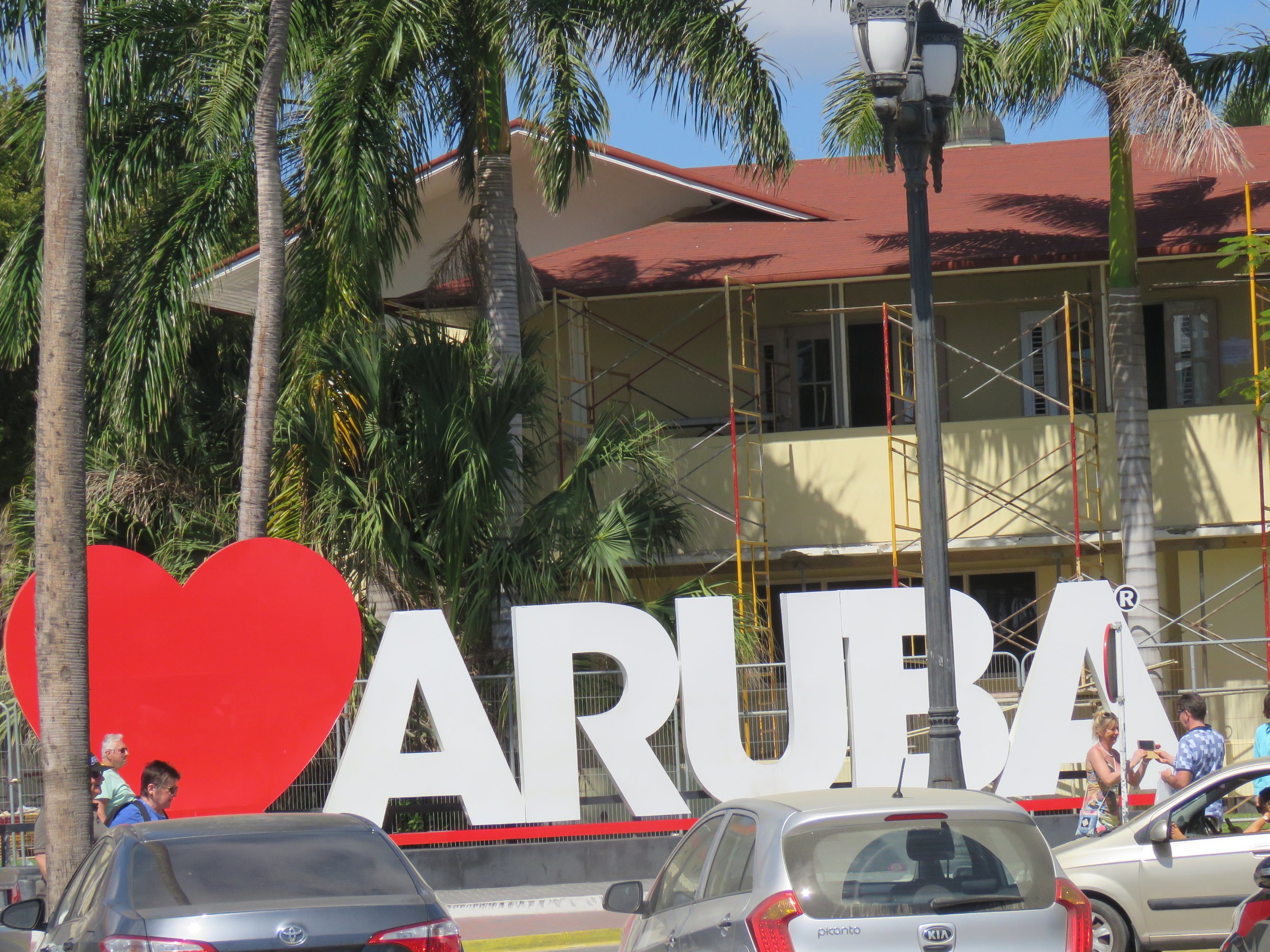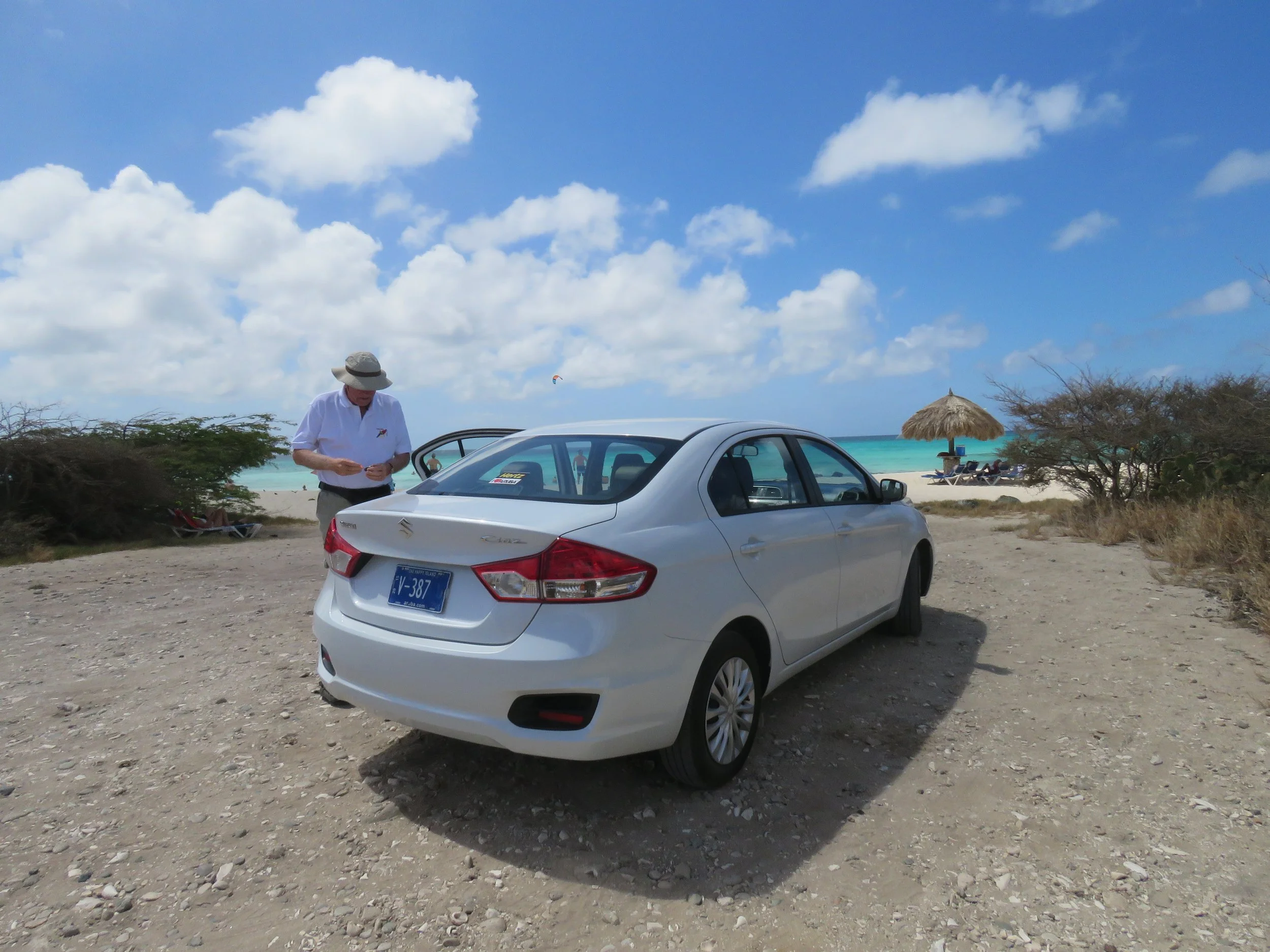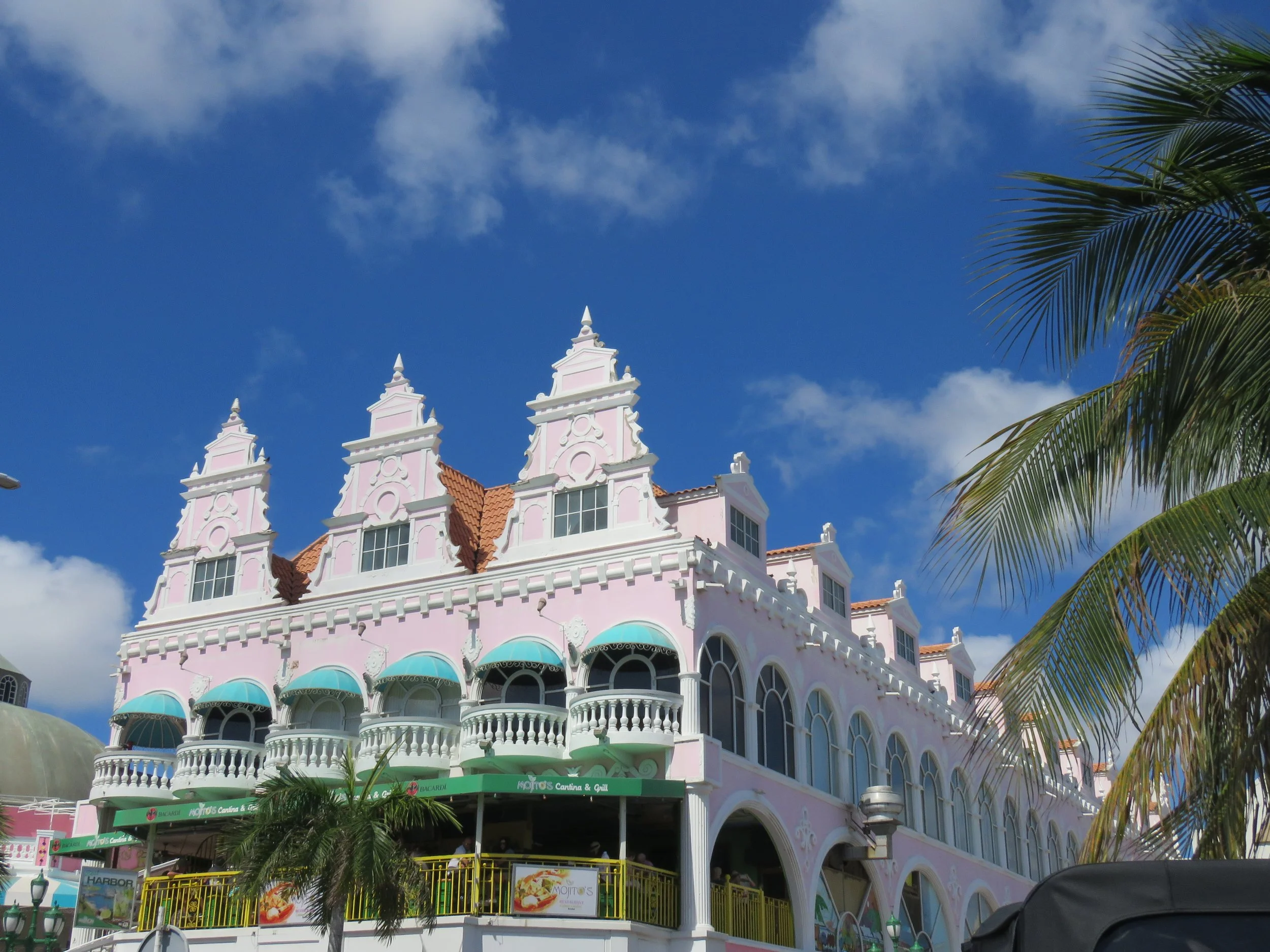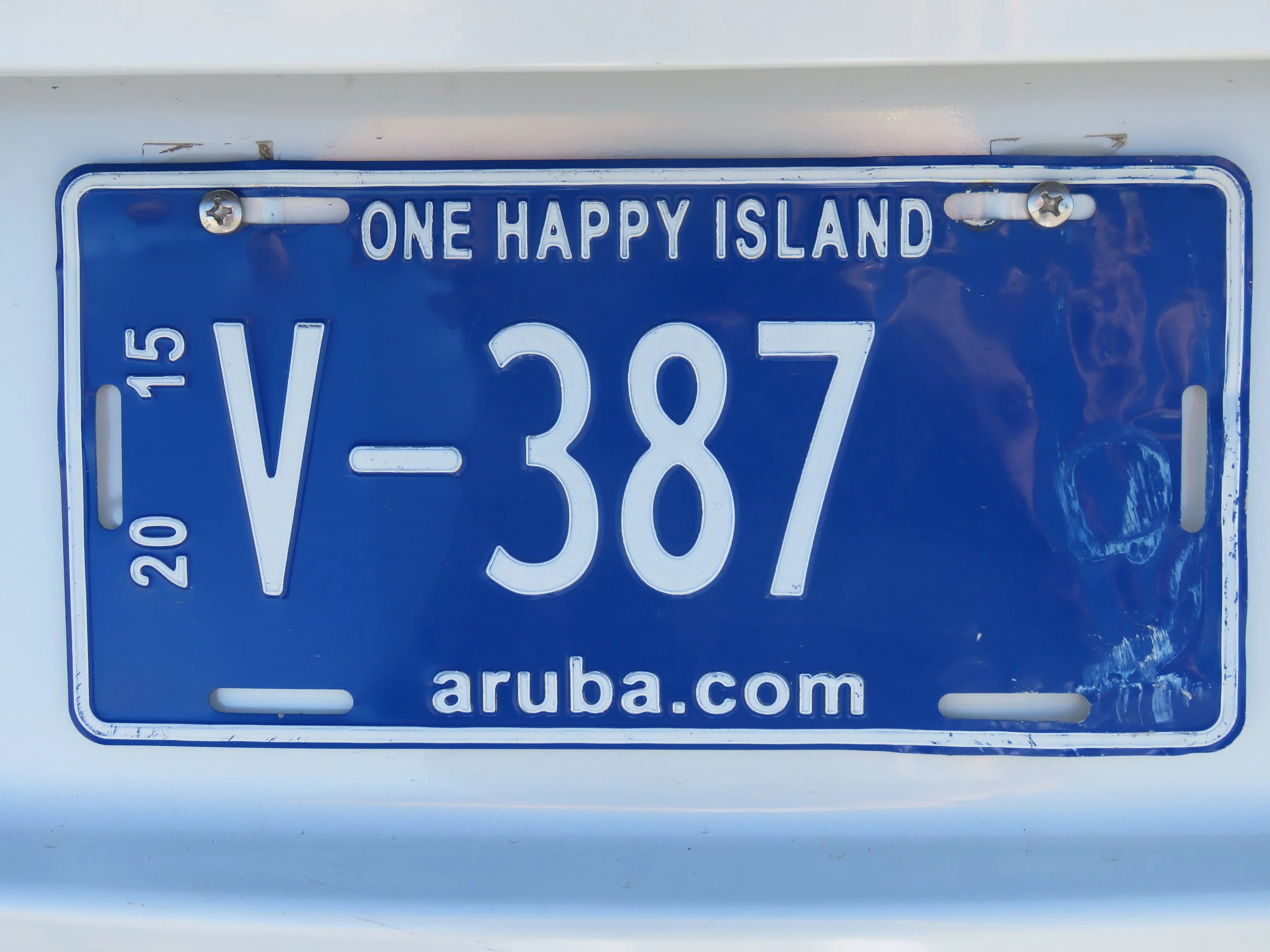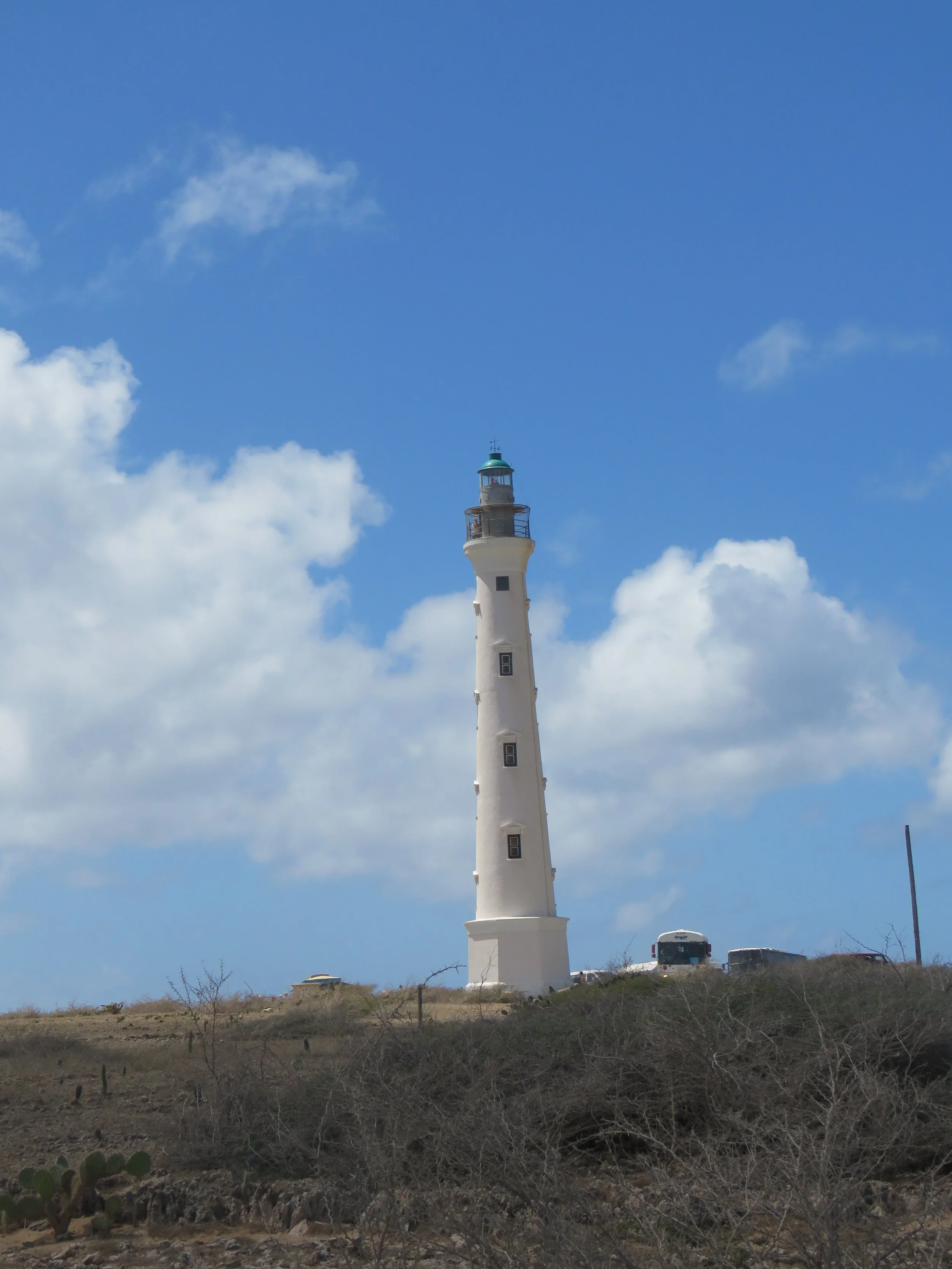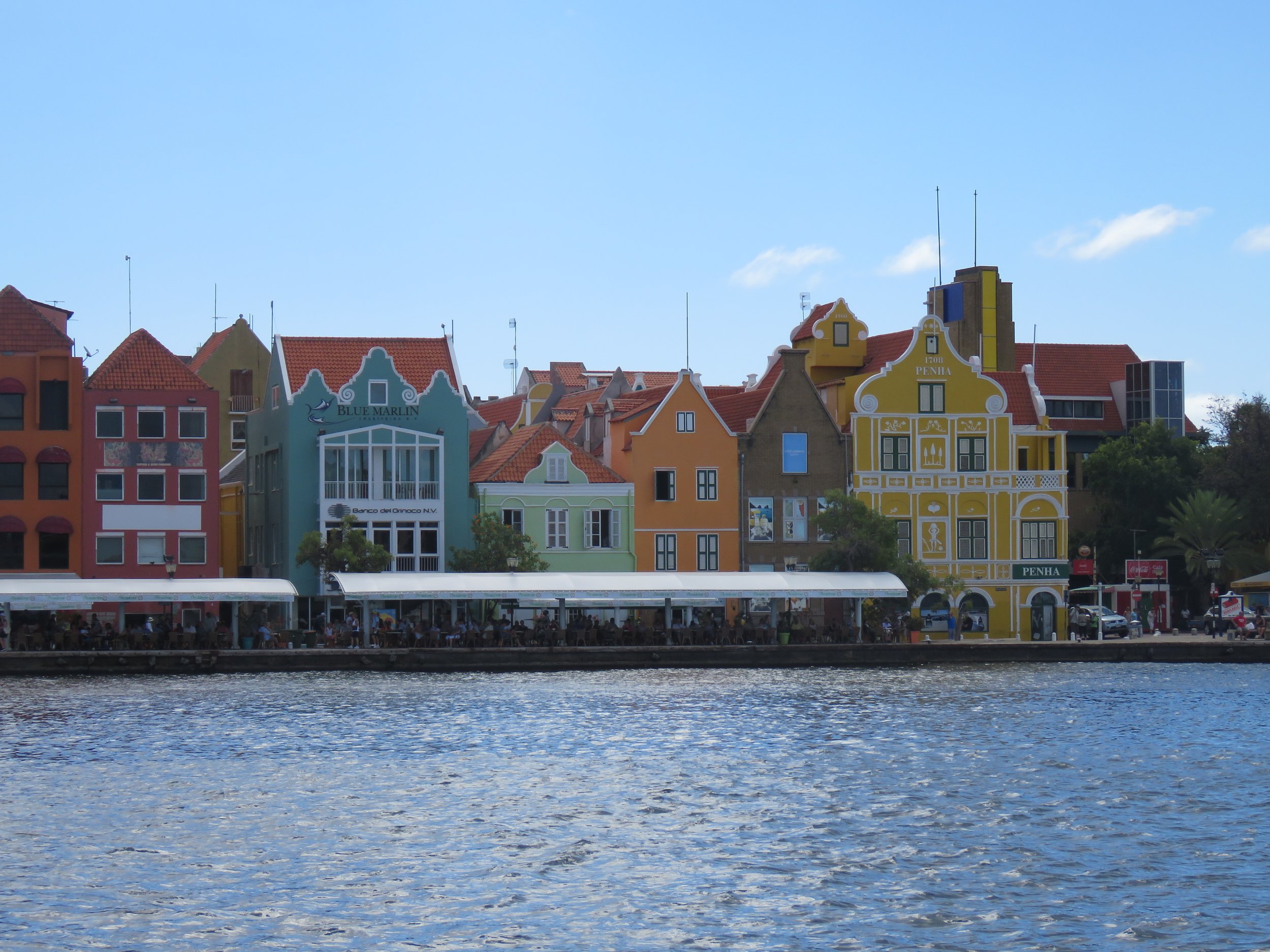A is for Aruba: One Happy Island
As kids in school in The Netherlands we learned about The Netherlands Antilles: Aruba, Bonaire and Curacao. We were thrilled that these islands were included in our ship’s itinerary when we took a Panama Canal Cruise (LINK) from Los Angeles to New York.
Our rental car
As usual we did our homework before leaving home. I studied the map of Aruba on Google Maps and read about the island. Aruba sounded like the most ‘party island’ of the three. One comment on TripAdvisor suggested that this is a good place to rent a car. We thought that was a brilliant idea. On Google Maps I found a car rental place right next to the pier and booked a small car for the day.
The ship offered an excursion only to the Lighthouse on the northern tip of the island. That half day bus tour with a horde of other people would have cost us 65.- US per person. By booking our own rental car we had access to the entire island, by ourselves, all day, for about 45.- plus taxes and fees, about 73.- total.
We walked over from the ship. The car rental place gave us a map of the island and we headed south along the very busy, touristy boulevard. It was so interesting to see traffic signs and street names all in Dutch! Even the traffic rules are the same as in Holland: traffic coming from the right has the right of way; no right turns on a red light.
Oranjestad
From Oranjestad we drove to Sint Nicolaas and beyond, We stopped at a white sand beach along azure waters and watched kite surfers on this blustery day. Then we proceeded to drive every main road, across the island to the far side, all the way north and back again.
We stopped at, what turned out to be, a very popular bakery. They had lots of Dutch things and everyone speaks Dutch. “We learn five languages in school,” someone told us, “Dutch, English, Spanish, Papiamento and Portuguese”. It was fun to be able to chat with someone in several languages mixed together.
The currency was even more mixed up. Prices in the tourist area were posted in US dollars. But in more local shops, like the bakery, the cash register showed Antilles guilders. We were told we can also use euros.
The license plates here have the slogan: One Happy Island. Our oldest grandson collects license plates and we thought it would be fun for him to have one of these license plates, if we could find one. We stopped at an old garage and tire place. “Oh, we just threw out a bunch yesterday…” the guy told us, in Dutch. At the next garage, they didn’t have any either but a customer overhead me asking and said “Just follow me home and I’ll give you one.” So we did… and now we have both a souvenir and a story of a kind stranger.
We drove all the way to the northern Lighthouse and then back along the shore to Oranjestad. It seemed to us that most of the older, smaller homes for locals were in the south end. It was a bit dilapidated, with lots of little beer shops and night clubs. The northern end, however, had endless rows of newly constructed apartment buildings and condo’s. Signs pointed to “high rise hotels” and “low rise hotels” with casino’s sprinkled in for good measure.
The water front in Oranjestad was choked with tourists, busses and other traffic. It was very touristy and did seem to live up to its reputation as a party island.
C is for Curacao
(We did not visit ‘em in alphabetical order!) For many years I had seen photos of a picturesque, pastel coloured row of Dutch houses along the water. Willemstad, Curacao. I didn’t think I’d ever see the place in person so I was thrilled when I saw that this was one stop on our cruise itinerary.
Willemstad
The three Caribbean islands have been a Dutch colony for hundreds of years. In 2010 the islands wanted autonomy and some separation from The Netherlands took place. Now, they are not independent because that would have meant loss of social services, European citizenship and economic support. But the islands are ruled almost like a Dutch municipality, albeit remote.
The ship docks here just outside the town. We walked first through a total tourist trap: the old stone remnants of the city fort have been turned into a corridor of shops and restaurants that steer visitors right through it, no way around. It’s even hard to find the exit into town.
But after that we strolled the quay and crossed into city center over the Queen Emma Bridge, a long wooden swing bridge. To our delight a sail ship had to pass so the bridge swung open to let it through, a fascinating system. People can even stay on the bridge as it swings open and back again:
Stretching across the far side of town is the large blue arch of the newer Queen Juliana Bridge.
We strolled through quiet, Sunday morning streets. Most shops were closed but we found a coffee shop with wifi along the water. It was like sitting along a canal in Delft or any other historic Dutch town - the very same architecture, alley ways, even products (Heineken and Amstel of course). All signs are in Dutch and everyone speaks it. It feels like a bit of an anachronism…
We walked by the floating market, crossed a square, saw the churches. Then we crossed back across the swing bridge (there is also a free ferry but it didn’t seem to have a schedule on Sunday morning) and walked into the other, slightly rougher part of town. This seemed less geared at visitors and more at locals. Here we found little shops and eateries with signs mostly in Papiamento. Venturing into one little cafeteria, we ordered croquettes and beer before strolling back to the ship.
One of my best friends was born and raised on Curacao so it was a really neat experience to see her place of origin. With cascading bougainvilleas and a laid-back atmosphere, Curacao certainly seemed like a good place to spend time in the winter. And I’m grateful I finally got to see that famous, pastel coloured row of Dutch houses along the water in the remote Dutch settlement in the Carribean.
B is for Bonaire: The Diving Place
Of all the places we visited on this trip, Bonaire is the island I would have liked to spend more time. Judging from our brief visit, it seemed the most natural of the three with huge green areas and nature parks. As the license plate states, Bonaire is ‘The Diving Place’.
Kralendijk, Bonaire
From the ship we saw a long skinny island stretching north and south from the town of Kralendijk. We joined the group that had signed up for a glass bottom kayak and snorkelling tour. We walked down to where the kayaks were stacked along the beach, donned our life jackets and paddled across the bay to a strip of white beach further south. It was a very windy day so we battled good sized waves. Thanks to the glass bottom in our sit-upon kayak we could see the corral and sand on the bottom.
After a tricky landing on the beach, through a narrow path in the corral reef, we beached our kayaks and snorkelled for a while. Loads of little blue fishes, tiny bright yellow ones… I always love snorkelling in warm waters. Our (Dutch) guides were perfect and I highly recommend a trip with them if you ever visit Bonaire: http://www.kayaktoursbonaire.com
Entirely made of plastic and cans found in the ocean…
After our kayak adventure, we still had a few hours so we walked briskly all over town to explore some more. We picked up diving information for a son, chatted with locals, and of course found another great coffee place with wifi.
On the way back to the dock we came across the cutest Dutch pub and couldn’t resist sitting in the typical wicker patio chairs with a Dutch beer.
Bonaire seems less touristy to us, perhaps a bit more planned, less tacky than Aruba which had life size plastic cows and horses all over the place…
Just before we leave this last, lovely Caribbean island, we stop at a craft market and Kees buys me a little piece of Bonaire: a necklace with a aqua coloured piece of glass that will always remind us that we’d like to return to these exotic islands some day.

